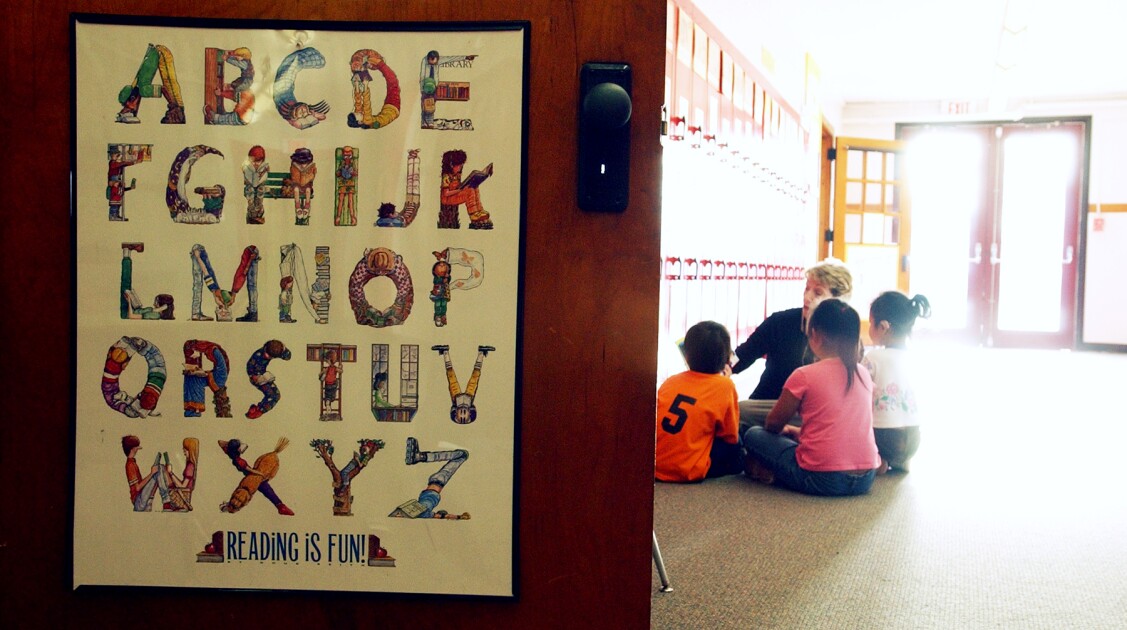At the midway point of the federal Race to the Top program, the list of accomplishments for the 11 winning states and the District of Columbia is getting longer, but the challenges are getting more formidable as the time frame gets shorter, according to a progress report issued by the U.S. Department of Education last week.
The second annual report on the recipients of $4 billion in competitive grants under the Obama administration’s signature education redesign program reveals that the majority of winners are struggling in two areas: implementing teacher- and principal-evaluation systems, and building and upgrading sophisticated data systems that will do everything from inform classroom lessons to identify students at risk of academic failure.
And Education Department officials say they are most worried about three recipients for which second-year performance took a nose dive: the District of Columbia, Georgia, and Maryland.
Georgia and Maryland have both struggled with implementing their teacher-evaluation systems, while the District of Columbia’s sluggish pace on school turnarounds means it has only worked with one persistently low-achieving school with its grant funds so far.
“This is really hard work, and there will always be bumps in the road,” said U.S. Education Secretary Arne Duncan in a Jan. 31 call with reporters.
Halfway Point
Meanwhile, Hawaii—although it retains its “high-risk status” for its entire $75 million grant—has made tremendous progress in the last year, department officials said, even without an approved teachers’ contract that is holding up the full implementation of its new teacher-evaluation system.
“Hawaii, which clearly had a rough start, is now making real progress,” Mr. Duncan said.
The report, which spans fall 2011 to fall 2012, reveals the department’s perspective on how things are going with the program funded by the 2009 economic-stimulus package.
Last year, the Education Department cited Hawaii, New York, and Florida for their lack of progress during the grant kickoff year. Those states now seem to be in the middle of the pack for performance against their grant promises. And to show how quickly things can change, Maryland was lauded last year for progress—and criticized this year for the lack of the same.
This year, states that made the department’s second-year honor roll list are Tennessee, North Carolina, and Rhode Island, which Mr. Duncan said have “overcome considerable challenges and stayed right on track.” Rhode Island has made progress even amid challenges in its turnaround work, North Carolina in fully implementing its teacher-evaluation system, and Tennessee has an enviable network of science, technology, engineering, and mathematics, or STEM, programs, department officials said.
Georgia and the District of Columbia are perhaps in the biggest trouble, as department officials say they are encouraged with the new state leadership in Maryland. State schools chief Lillian Lowery acknowledged Maryland’s problems in an interview with Education Week in January and said she has kicked her state’s Race to the Top implementation into high gear on its $250 million grant.
Part of Georgia’s $400 million Race to the Top grant is on “high-risk status”—an official designation that can lead to losing grant funding—for weaknesses in implementing its teacher-evaluation system.
Sluggish Pace
For their part, Georgia officials said they’re working to straighten things out with federal officials. State education department spokesman Jon Rogers said Georgia has made “quality progress” in four of the five conditions federal officials placed on its grant—which included things like improving the overall management of the teacher-evaluation system. The final condition, which is using feedback and data to improve Georgia’s educator-evaluation systems, will come after teacher and leader evaluations are done this school year, Mr. Rogers said.
Mr. Duncan also singled out the District of Columbia for its sluggish pace on its $75 million grant, especially in the area of school turnarounds, in which only one of 13 schools designated for support through Race to the Top is getting it.
District of Columbia officials said they have made progress, including in directing more resources and retooling the effort.
“While the District has made meaningful progress in the second year of Race to the Top and addressed the major challenges listed in the report, we must continue our efforts to improve our state’s education system,” said State Superintendent Hosanna Mahaley Jones in a statement.
Mr. Duncan also acknowledged that New York, which received a $700 million grant, is having problems with teacher contracts in New York City, which has Race to the Top implications. He said he hopes that “resolves soon.”
While teacher-evaluation problems plagued nine of the winning states in the second year, six states grappled with challenges involving technology upgrades.
Ohio, which received $400 million, and Maryland, for example, struggled with rolling out new instructional-improvement systems, while Tennessee, which got a $500 million grant, struggled with a new “Early Warning Data System” that will analyze student achievement data and flag problem spots for educators.







